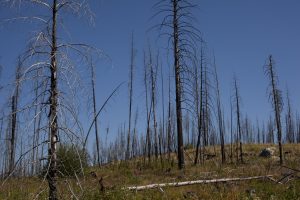By Josh Knoll

In response to a devastating wildfire year in 2018—and in anticipation of the wildfire year ahead of us—Rep. Bruce Westerman of Arkansas has reintroduced the Resilient Federal Forests Act, bipartisan legislation that would expedite National Environmental Policy Act (NEPA) review for necessary salvage harvests by expanding the use of “categorical exclusions,” or CEs for short.
Beginning in the George W. Bush administration, CEs were granted for small forest management projects necessary to protecting public health and safety. To be eligible for a CE, the project cannot “individually or cumulatively have a significant effect on the human environment.”

CEs allow for certain federal agency actions to progress subject to a streamlined NEPA review process, which would otherwise require the lead agency to prepare a more laborious environmental impact statement (EIS) or environmental assessment (EA). Without a CE, the NEPA review process can take in excess of three years to navigate – allowing ample time for wood to rot, or worse, fuel catastrophic wildfires.
Westerman’s bill would amend the law to allow CEs for federally-led projects of up to 10,000 acres in size. It would also allow CEs for non-federal, collaboratively-led salvage projects on up to 30,000 acres in size. Given the severity of the wildfire seasons both behind us and on the horizon, expanded CEs could be one of the most important tools we have for accomplishing timely wildfire mitigation work.
Josh Knoll is NASF’s 2019 Spring James Hubbard Intern for Policy and Communications. He can be reached by email at intern@stateforesters.org.

